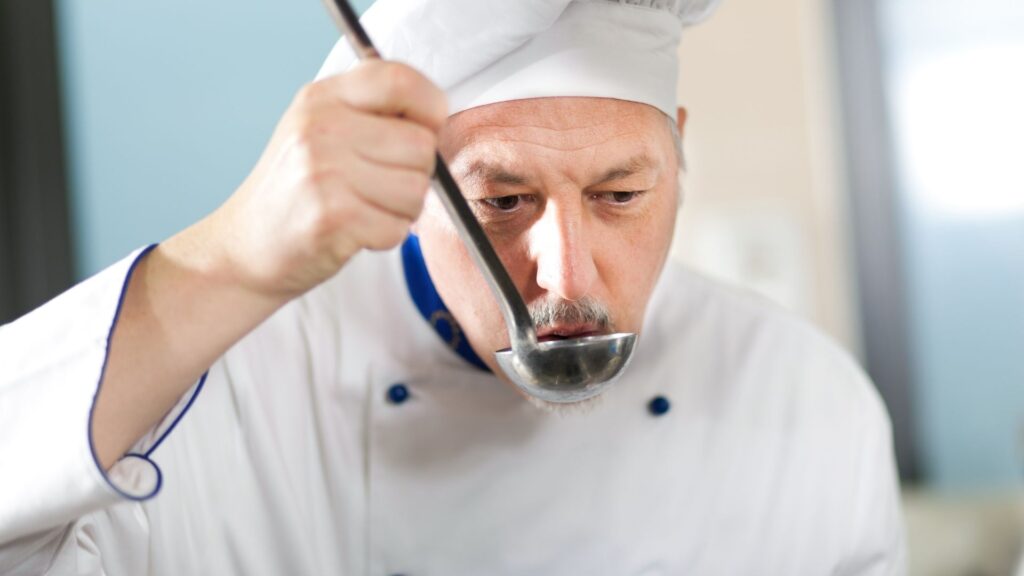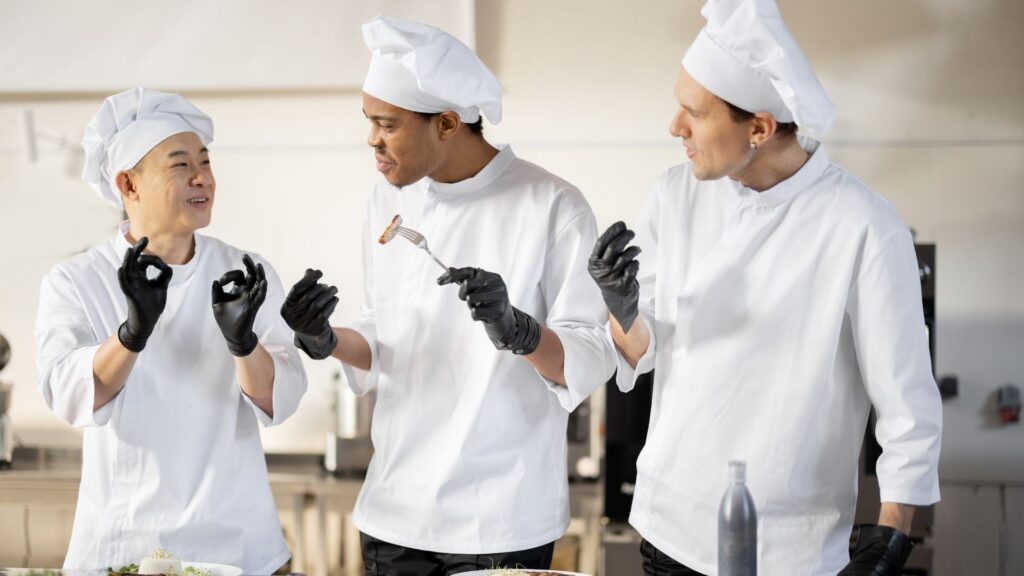
Imagination is the Limit with Palates
How do you define a perfect meal? If you asked most people what they thought of when you said, “one fine dish,” they might mention their grandma’s chicken curry or their mother’s hearty ratatouille or the cake their aunts made for their birthdays.
There’s a strong chance you were perplexed the first time you saw a Michelin-starred chef taste food. Is it possible for them to experience all of that flavor in one bite? Like a rabbit being pulled out of a hat? If you must know, the secret is that they have exquisite “palate” and can detect even the most faint flavors.
In general, a human tongue can distinguish between five different flavors. Seasoned chefs have exquisite taste buds which they use to create delicate and delicious flavor combinations. If you train your palate like a professional chef, you, too, can recognize and harmonize these flavors and create delicious, well-rounded dishes without resorting to a recipe. If you can figure out what’s making your food taste amusing, you can fix it.
Most individuals would just chalk it up to innate ability and without a doubt it could be the case. However, it has been found that anyone, including yourself, may learn to develop a more refined sense of taste and smell with practice. With practice, like most things, you can get good at it.
Fortunately, there are easy and pleasurable ways to improve your sense of taste. The road less traveled to a life more delicious begins today, once you finish reading this piece based on the expertise of Sirwiss-affiliated private chefs.
Your Taste Buds: What You Need to Know

Taste is one of the five primary senses. It helps you evaluate food and beverages to determine which are secure to consume. In addition, it prepares the organism for digestion. Like other senses, taste assisted our progenitors in surviving. The flavor of food results from its chemical compounds. These compounds interact with sensory cells (receptors) in the taste buds. The cells transmit information to the brain, which identifies the taste. Humans can identify a variety of flavors. Each flavor serves an evolutionary function, such as the identification of spoiled foods and poisonous substances.
What are Your Predominant Tastes?
We have receptors for five kinds of tastes:
- Sweet
- Sour
- Salty
- Bitter
- Savory
Difference Between Taste and Flavor

Taste and flavor aren’t the same thing.
1. Taste refers to the sensory cells in your taste receptors and their perception. When food compounds stimulate these sensory cells, the brain recognizes a flavor, such as sweetness.
2. Flavor comprises both flavor and aroma. Your sense of scent produces an odor. Sensory cells in your nose interact with odor particles, then send messages to your brain.
You may associate odor with the ability to detect something. However, when you consume food, odor particles in your mouth infiltrate your nose via your nasopharynx. This is the upper portion of the throat located behind the nostrils. This odor and taste combine to create flavor. Depending on the potency of each odor and flavor, there are numerous conceivable flavors.
How Does Taste Work?

You have hundreds of taste papillae, or bumps, spread around your tongue. In humans, there are anywhere from ten to fifty taste receptor cells per taste bud in each papilla. The tongue, cheeks, roof of the mouth, and pharynx all contain taste receptor cells. The receptors in your mouth examine the various substances in the food you consume. Then, the nerves in your tongue and palate send impulses to your brain, where they’re interpreted as taste. Because of this, we can now link specific flavors to particular feelings.
All five tastes are indeed detectable across the entire tongue, contrary to common assumption. A specific “zone” does not exist for every single one. It’s true that the taste buds in the middle of your tongue are among the most sensitive in your body, but the sides of your tongue are even more so. Except for the very back of your tongue. We may be able to detect poisonous foods before we eat them because this area is very sensitive to bitterness.
What Factors Can Affect Your Taste?
Some illnesses and injuries can impair your sense of taste.
Examples include:
- Upper respiratory infections
- Middle ear infections
- Radiation therapy of the head or neck
- Taking certain medications, like antihistamines and antibiotics
- Exposure to some chemicals, like insecticides
- Ear, nose, or throat surgery
- Wisdom tooth extraction
- Head injury
- Dental problems
- Poor oral hygiene
- Hypogeusia (loss of a certain taste)
- Ageusia (loss of taste)
- Dysgeusia (altered sense of taste)
What Is a Palate?

In this context, “palate” might mean a few different things. To contact the palate, the upper surface of the mouth that divides the oral and nasal cavities, you need just touch the tip of your tongue to the roof of your mouth. When you train your taste buds to pick out subtle differences, you are said to have developed or refined your palette. Your improved sense of taste will make it easy for you to season foods to your liking and identify and correct off-flavored dishes.
The Benefits of Expanding Your Palate: Why Bother?
Being open to new flavors is a great way to develop your palette (we’ll get back to this idea in a while). A more varied diet can be achieved with as much or as little effort as you care to put into it. However, at the outset, you may wonder why it is necessary.
Most people enjoy food and are completely content with their established culinary routines. They prepare and consume the same things, taste the same flavors, and, at the end of the day, have fun.
If something is not broken, why fix it? Two minutes of listening to any chef speak about food will provide the answer.
They have worked to develop and broaden their tasting abilities and experiences. And for the trained palate, a meal becomes more than just a supper; there is a new connection with the food. This relationship can open the door to a world of conscious, mindful, and yes, healthful eating. Sold? Good. Let’s get into some palate development techniques.
Improve Your Palate with the Basics: The Building Blocks of Flavor
In developing a more refined sense of taste, you are essentially acquiring a new talent. And the best way to learn something new is to begin with the fundamentals. (You do know you should walk before you run, right?).
Your tongue can pick up five different flavors: sweet, salty, bitter, sour, and umami. You need to be able to distinguish each of these flavors independently before delving into how they combine to provide more nuanced and interesting sensations. The first four are easy to define, but umami can feel elusive. Umami is a Japanese word that describes the delicious taste of foods like beef, mushrooms, and broth.
Like a muscle, your ability to discriminate between different flavors can be strengthened with practice. Next time you sit down with a cup of coffee, take it easy. Hold it in your mouth for a moment. So, how does it taste? Its bitterness is inevitable. However, what else do you notice? A touch of sourness could also be present.
The same rule applies while consuming fruit. Even though sweetness is the prevailing flavor, you’ll almost certainly detect some other notes. How sour is it, if at all? Bitter? You’ll develop an appreciation for the interplay between these foundational flavors as you work on identifying them one by one.
Use the Sense of Smell (If Not Lead with It)

The tongue is typically thought of while discussing the sense of taste. After all, that’s where your sense of taste resides. However, your taste buds aren’t as sensitive as you may think; they can only pick up on the five basic tastes.
On the other hand, your nose has the potential to pick up between 10,000,000 and 1,000,000,000 distinct odors. While chewing, your brain combines information from your senses of taste and smell into a single sensation called “flavor.”
If you want a better palette, you should work on your nose as much as your mouth. Give yourself time to savor the scents before diving into your meal (or drink). Using only your nose, what flavors can you identify in this dish? By putting in the effort to recognize these aromas, you’re preparing yourself to more fully appreciate the food’s flavor whenever you actually take a bite.
Get Out of Your Comfort Zone: Broaden Your Taste Buds Through Experiences

Simply eating a wider variety of foods is one of the simplest and most effective strategies to develop a better taste. The next time you go to the grocery store or the kitchen, try something new.
You shouldn’t rush out and buy anything expensive the minute the opportunity presents itself. Take baby steps. Be adventurous and pick up some beet greens, kale, or chard if you normally stick to “safe” greens like iceberg and romaine lettuce. That way, the salad for dinner tonight has a completely new flavor character.
If you’re looking for a method to expand your culinary horizons, one excellent option is to learn about the cuisines of different cultures. There’s no reason to limit yourself to the familiar when there are so many other flavors to try. It’s quite acceptable to start exploring new foods by dining in restaurants.
When you find a new restaurant whose food and drinks you enjoy, you can try making them at home (perhaps with a few adjustments). It’s possible that some of the ingredients in recipes you’re not used to would surprise you. For example, in aloo gobi, a famous Indian meal, a potato, which is generally served with salt and other basic ingredients in the United States, becomes a vessel for a wide variety of herbs and spices.
Get yourself a new cookbook or food blog to explore the infinite possibilities of taste. Keep in mind that not everything has to be a favorite. Learning what you don’t like is a natural consequence of venturing outside of your comfort zone.
Reset Your Taste Buds with Palate Cleansers

Some flavors persist longer than others in the mouth. Consider garlic, shallots, and other pungent foods. It is a fact that has marred countless first kisses, as well as your ability to detect subtle flavors. Residual flavors in the mouth can combine with new flavors, masking or altering the true flavor of the next item consumed.
Thankfully, there is a simple remedy to this issue: palate cleansers. These neutral-tasting foods help remove residue from the tongue and “reset” the taste buds. This is why sashimi is served with pickled ginger and why some upscale restaurants serve sorbet between courses. But let’s be honest, most people don’t have preserved ginger or sorbet on hand. You can easily cleanse your palate with something as simple as a bland cracker, white bread, or a glass of water.
Healthy Mouth

Everyone is aware of the health dangers associated with smoking cigarettes at this point. Putting aside the health concerns, however, smoking can also impair your ability to taste food. According to one study, the relationship between smoking and diminished taste sensitivity is linear: the more a person smokes, the less sensitive their sense of taste becomes. The positive news is that taste receptor damage is not permanent. Within two months of quitting smoking, the majority of smokers’ perception of taste returns to normal. Obviously, smoking is not the only thing that can affect your taste receptors’ sensitivity. Additionally, you should avoid foods that are excessively hot, salty, or sweet, as they can all dull your perception of taste.
Make Time for Food

Slow down and savor your food, is the underlying motif of the majority of suggestions. Take pleasure in the present. Your attention is divided if you are continuously eating on the go, working during lunch, or watching television during dinner. And delicious cuisine merits your undivided attention. Mindful eating is the name for this practice. You may have heard of mindfulness in relation to meditation or mental health care. However, the technique can also be applied to cuisine! Simply stated, mindfulness is the focus on the present moment. What are your thoughts, emotions, and bodily sensations? Recognize and embrace everyone.
Improving and expanding one’s palette is a continuous process. As your palate develops, expands, and improves, you will discover that there is always more to explore. It is one of the process’s pleasures, but it can also be somewhat intimidating. So, keep in mind: do it on your own terms.